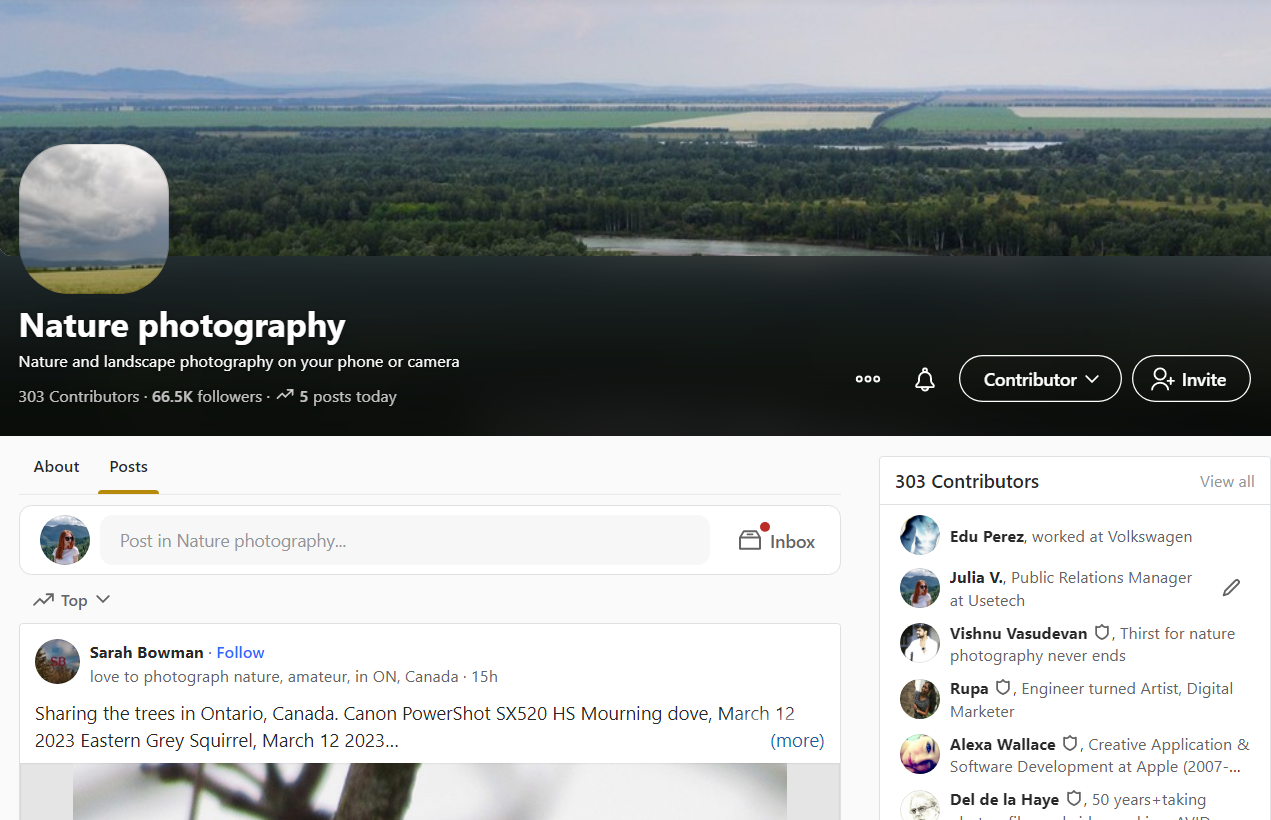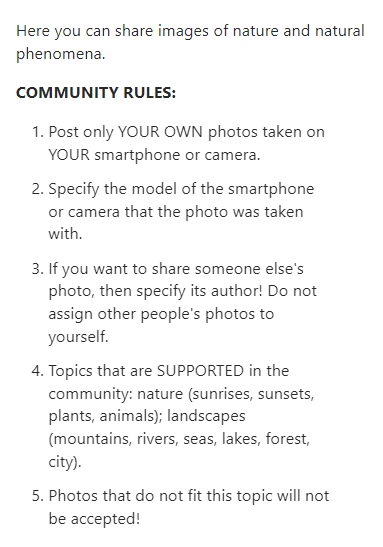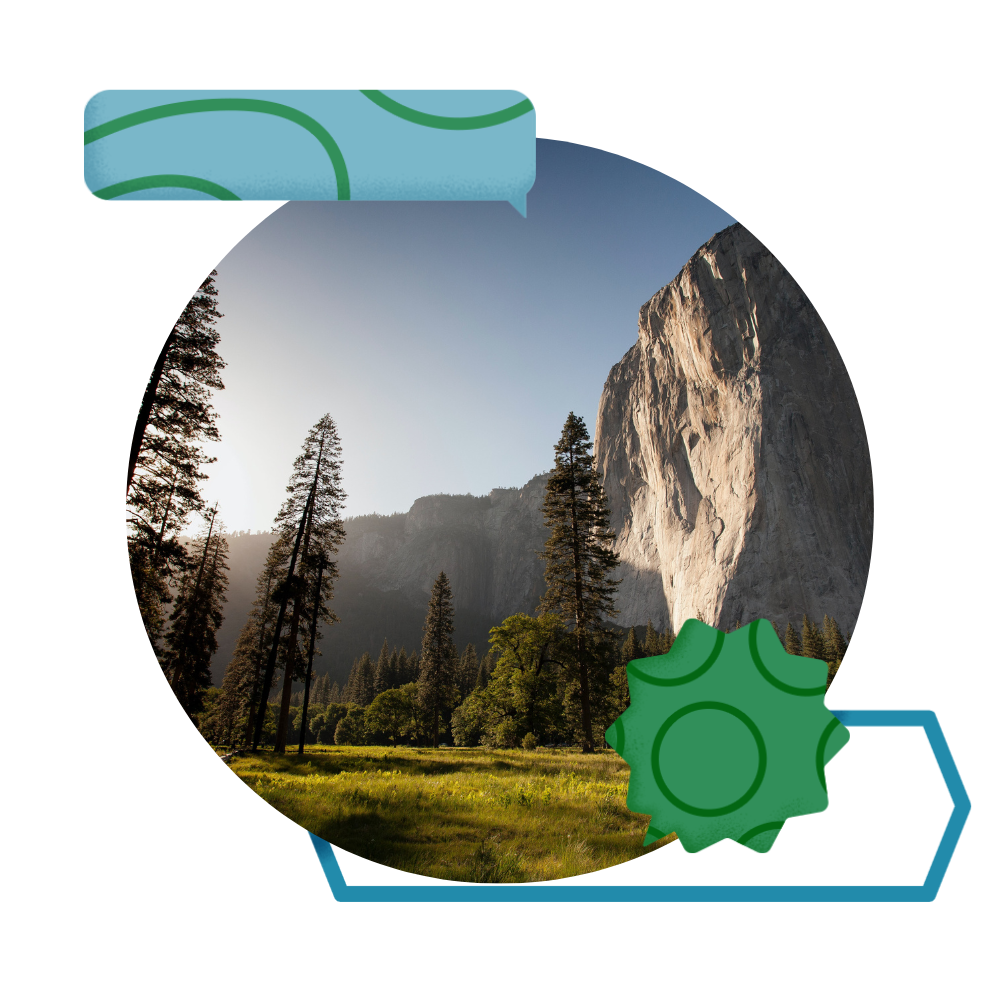This story is my personal experience of building a space from scratch, when all I had in my head was an idea and a desire to make a space in which people could share photos of nature.
Background: How did the idea of my Quora Space come about?
Why Nature Photography? My hobby is photography. Since 2010, I started shooting portraits and landscapes, but at some point I realized that landscapes attracted me more. When I created the community (I think it was 2019), I worked with Quora (answered questions relevant to my work and professional activity; shared expertise) and kept my personal account. I wanted to create a space that would be my outlet and my entertainment. That’s how the idea of creating a space about photography appeared.
I analyzed the existing Spaces. There were already a lot of photography Spaces, but they were all general and did not adhere to a specific topic. People sent photos of everything to these spaces: their animals, nature, portraits, and selfies. Therefore, I decided to make a clearly directed community, specifically about nature photos. That’s how Nature Photography began.

Today the community has over 66,000 subscribers and more than 300 contributors. Once I could not believe that it was possible to achieve such figures. And, by the way, I have never used additional advertising or paid subscribers. All subscribers came to the community by themselves or by invitation from existing participants.
How did I start?
I understood that the visual component of the Space is very important, and therefore there should be high-quality content in the community. I chose the community logo and the cover that you see now. And by the way, these are my personal photos!
I also made a post welcoming new members. Now I’m not going to scroll to the beginning of the tape, but my first post was something like this: “Hello everyone! I am glad to welcome you to the Space dedicated to nature photography!”.
I had about 100–200 subscribers to my personal account, so I sent them invitations to join the Space. Those with whom I communicated well, I made moderators of the community. Most of them are still there. These participants began to send invitations to their subscribers and … so the Space began to gain thousands and thousands of subscribers. Of course, I paid attention to which accounts were joining the Space and cleaned bots or deleted accounts that published spam.
In order to avoid problems with publications, I wrote rules for the Space:

What did my day look like when working with my Quora Space?
I tried to devote one to three hours a day to maintaining the Space. What was included in this work? First, processing incoming applications. Followers could join the Space without an application, but to become a contributor or moderator, it was necessary to write a message explaining why. This algorithm worked perfectly: the Space attracted people who were both interested in photography and the development of Space.
Secondly, I published my own content, finding nature photos in the archives, as well as reposted content from suitable communities to show what I liked.
Thirdly, I processed requests for publications from the participants of the Space. In the application, I asked to indicate the name of the device on which the photo was taken (phone or camera), the year, whether any applications were used during processing, and the name of the photo. It’s always interesting to read what colleagues use.
Occasionally someone would try to post spam or an inappropriate photo. Of course, these people were denied publication.
I also analyzed the statistics of subscribers and publications: how many new people came to the Space this week? Which publication did the participants like the most? Who approved the most applications? This is a great opportunity to understand what the Space is missing.
Problems and challenges I faced
When you start working with Space, you have to take on a lot of roles: you are a participant, a moderator, a community manager, a strategist, and a founder. It is important to understand that the Space is a community of people in which dialogue is important.
Once I had to face a situation where one participant insulted another. Immediately after that, I created a set of rules, one of which was not to offend other participants of the Space. The situation was resolved by dialogue. The participants talked to me personally, told the situation from both sides, and I, in turn, talked to them, and nothing like this ever happened again.
Tips for those who want to create their own Space on Quora
- Analyze similar Spaces in your niche and think about how you can differ from them. You may have a different presentation of information, different values, and philosophy.
- Write the rules of the Space in advance to avoid conflicts and misunderstandings. The rules may apply to publications and topics, as well as communication in space.
- Appoint several initiative participants as moderators. If you are in different time zones, the joint work of moderators will help you keep the Space under control and avoid delays in accepting new publications.
- Communicate with the audience. Answer their questions, give advice, and just discuss any topic. Firstly, the Space is a place where people are united by a common idea.
- Think over the content plan and constantly add fresh ideas to it. This allows you to involve new participants, as well as interact with old ones.
- Don’t be afraid to experiment!

